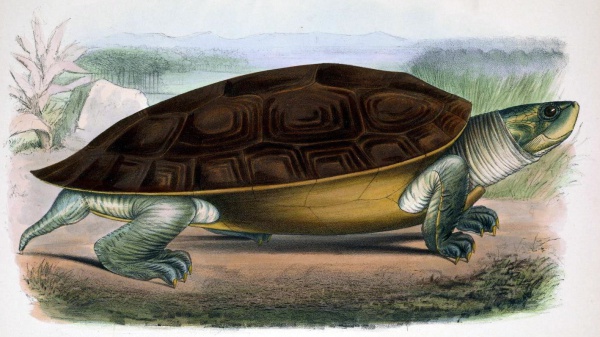Facts About River Terrapin
The northern river terrapin, a large freshwater and brackish water turtle native to Southeast Asia, is critically endangered and presumed extinct in many parts of its former habitat. Known as one of Asia's largest turtles, it can reach up to 60 cm in shell length and weigh about 18 kg. This species exhibits some distinctive physical characteristics, including a moderately flattened shell and a small head with an upward-tilting snout. Male turtles are particularly striking during the breeding season, displaying black heads with crimson-orange markings.
These turtles can be found in countries such as Bangladesh, Cambodia, India, Indonesia, and Malaysia. Regrettably, they are considered regionally extinct in areas like Myanmar, Singapore, Thailand, and Vietnam. Their habitats encompass estuaries, large rivers, and mangrove forests. While they prefer freshwater environments, they migrate to brackish areas to breed. As omnivores, they feed on plants and small animals, such as clams, and females are capable of laying multiple clutches of eggs.
The IUCN lists the northern river terrapin as critically endangered due to several threats: overexploitation for food, illegal trade, loss of nesting beaches, and pollution. To address these threats, conservation efforts like hatcheries and captive breeding projects are underway in Bangladesh and India, supported by organizations such as the Turtle Survival Alliance. These initiatives aim to protect and restore the populations of this endangered species.

 Vietnam
Vietnam